What policies do you have in place concerning cash handling, deposits, cash flow and preventing theft by a shoplifter or employee? If you have policies when did you last review them? If you don’t have set procedures and policies you are putting your store at risk for theft and potential robbery. Below are a few suggestions that can be used to create policies or strengthen polices already in place.
CASH FLOW
Starting with your cash office, there are things your cash counter, managers/supervisors and you can do to maintain cash flow integrity. At the start of the day the cash office employee should set up your money bags for registers with a set starting amount for each one. A manager should put the money in the tills and verify the tills are correct. I prefer money bags be used to move cash from the cash office to the registers with each bag being numbered to match a corresponding register. Some locations have the cash counter set up the tills and the tills are carried to the check-lanes. A rolling cash cart with a drop slot and locking door can be used to move the money bags to and from the cash office keeping cash secure. When a cashier is done for the day the money from their register can be placed in a money bag and dropped into the cart and rolled back to the cash office by a front end supervisor. A log should be kept requiring each person entering the cash office to write the time they entered, the date and their name and the time they exit. Money should always be locked in a safe and never left out on a counter in the cash office.
DEPOSITS
Deposits can be done in one of two ways. Some small stores have a manager take deposits to the bank or get change from the bank when the need arises. The second method is to contract with an armored car company to pick up deposits and bring change orders. This is the safest method and my recommended method for deposits. However, it is an expense and may not be in the budget for a small business. IF your managers are making the deposits, there are several safety precautions to take. NEVER go at the same time of day, it establishes a pattern for a criminal who may be looking for an opportunity to rob the manager. Likewise, NEVER take the same route to the bank every time, change up the direction even if there are only a couple of ways to get there. Always have someone watch the manager from the exit doors as the manager walks to their car and be ready with a cell phone to call 911 if a robbery takes place.
CASH DRAWERS
Train cashiers to never allow a customer to reach over the counter and get near the register  drawer. IF someone reaches towards the drawer the register should be shut. Registers should be closed immediately following a transaction. If a cashier is sorting through the money or “straightening” they could be slipping money out and pocketing it or dropping money, then putting it in their pocket. Don’t “exchange” bills for patrons, there are some shoplifters who also engage in short changing and confusing cashiers and steal money using this method. Others will argue they did not get the right amount of change and start reaching in the till. If there is a dispute over change a manager needs to conduct a till audit with a partner, in the cash office. If there are enough registers in the store, limit one cashier to one register, when the cashier is done for the day, their money goes in their bag with a supervisor present and the supervisor drops it in the cash cart and rolls it to the cash office. Keep large bills under the till, if they are on top they are easy to see and easier for a grab and run. Consider purchasing locking till covers for registers that have money in them but are not currently in use. There are traveling shoplifting rings and till tap rings that have register keys and will open drawers if no one is paying attention. Till covers prevent someone from getting to the cash even if they open the drawer. Finally, when a register has too many large bills or excessive amounts of money, do a skim and take the excess to the cash office.
drawer. IF someone reaches towards the drawer the register should be shut. Registers should be closed immediately following a transaction. If a cashier is sorting through the money or “straightening” they could be slipping money out and pocketing it or dropping money, then putting it in their pocket. Don’t “exchange” bills for patrons, there are some shoplifters who also engage in short changing and confusing cashiers and steal money using this method. Others will argue they did not get the right amount of change and start reaching in the till. If there is a dispute over change a manager needs to conduct a till audit with a partner, in the cash office. If there are enough registers in the store, limit one cashier to one register, when the cashier is done for the day, their money goes in their bag with a supervisor present and the supervisor drops it in the cash cart and rolls it to the cash office. Keep large bills under the till, if they are on top they are easy to see and easier for a grab and run. Consider purchasing locking till covers for registers that have money in them but are not currently in use. There are traveling shoplifting rings and till tap rings that have register keys and will open drawers if no one is paying attention. Till covers prevent someone from getting to the cash even if they open the drawer. Finally, when a register has too many large bills or excessive amounts of money, do a skim and take the excess to the cash office.
Cash handling policies can make your business safer and more profitable. Establish them and then periodically review them to ensure they are being followed.
 Light-When someone is looking to do no good to your property, they feel more secure if it looks like no one is home. The key is to confuse them and make them feel unsure. Remember, most burglars are lazy. If they are not sure about your house, they will move on. So you should have at least two light timers (three is better) set up and running seven days a week. These should be in different areas of the home and should come on and off at different times. Use the random or security feature found on most timers. This will vary the on/off time every day just a little in case someone is watching the house for a pattern.
Light-When someone is looking to do no good to your property, they feel more secure if it looks like no one is home. The key is to confuse them and make them feel unsure. Remember, most burglars are lazy. If they are not sure about your house, they will move on. So you should have at least two light timers (three is better) set up and running seven days a week. These should be in different areas of the home and should come on and off at different times. Use the random or security feature found on most timers. This will vary the on/off time every day just a little in case someone is watching the house for a pattern. 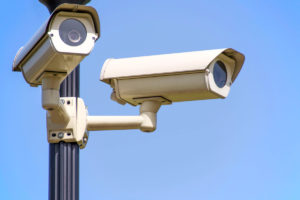 e cost. Shop around for quality units. A few things to consider when purchasing:
e cost. Shop around for quality units. A few things to consider when purchasing: Each year retailers take inventory of their merchandise, counting what they have in the store, reconciling that information against sales receipts, vendor credits and receipts and markdowns. Usually the result is some amount of shortage or merchandise shrink due to merchandise that cannot be accounted for and losses due to certain markdowns and damaged products. I have in rare instances seen overages, but those are usually the result of offsets from prior year shortages often attributed to paperwork errors. The store objective each year should be to improve upon the prior year inventory result. Certainly the best case would be to have zero dollar shortages every year, but that is not a realistic expectation. I try to explain to employees that if one package of gum were to be stolen during the year, you have incurred shortage. There are steps a store owner or manager can take to work towards that yearly improvement and shoot for a zero dollar shrinkage year.
Each year retailers take inventory of their merchandise, counting what they have in the store, reconciling that information against sales receipts, vendor credits and receipts and markdowns. Usually the result is some amount of shortage or merchandise shrink due to merchandise that cannot be accounted for and losses due to certain markdowns and damaged products. I have in rare instances seen overages, but those are usually the result of offsets from prior year shortages often attributed to paperwork errors. The store objective each year should be to improve upon the prior year inventory result. Certainly the best case would be to have zero dollar shortages every year, but that is not a realistic expectation. I try to explain to employees that if one package of gum were to be stolen during the year, you have incurred shortage. There are steps a store owner or manager can take to work towards that yearly improvement and shoot for a zero dollar shrinkage year.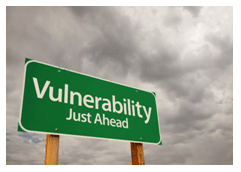 After a long and contested election cycle, a new president will be inaugurated and with this result, some experts are predicting the economy will begin to improve significantly.
After a long and contested election cycle, a new president will be inaugurated and with this result, some experts are predicting the economy will begin to improve significantly. customer transaction.
customer transaction.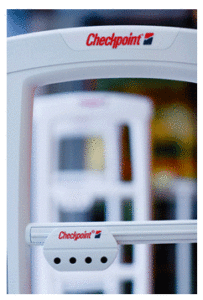 s level, but your bottom dollar. When people have a problem, they research a solution. One way to prevent shoplifting is having an electronic article surveillance system installed by a reputable company. Searching for such a company can be daunting. Shoplifting is an issue that needs to be addressed and resolved quickly. Why would you choose Checkpoint equipment from Loss Prevention Systems Inc. (LPSI?)
s level, but your bottom dollar. When people have a problem, they research a solution. One way to prevent shoplifting is having an electronic article surveillance system installed by a reputable company. Searching for such a company can be daunting. Shoplifting is an issue that needs to be addressed and resolved quickly. Why would you choose Checkpoint equipment from Loss Prevention Systems Inc. (LPSI?)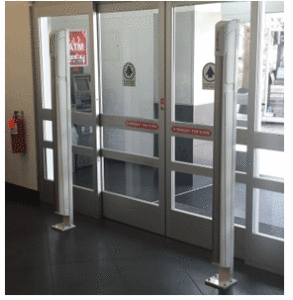 nce and typically resolve potential issues. With its strong frame and Evolve capabilities, it will last a long time and is “future proof”.
nce and typically resolve potential issues. With its strong frame and Evolve capabilities, it will last a long time and is “future proof”.  Can you believe we are in December already? This year has flown by and we’re in the home stretch. For many, many small and large businesses alike, this next month is crucial to profitability. Often times, the 4
Can you believe we are in December already? This year has flown by and we’re in the home stretch. For many, many small and large businesses alike, this next month is crucial to profitability. Often times, the 4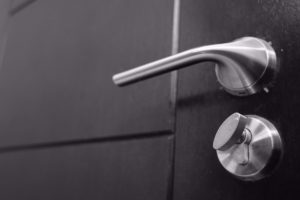
 In the previous article, I gave some great tips on how to prevent and prepare for a robbery. Like many things, it’s impossible to provide a solution that is all encompassing. After I penned that article I couldn’t help but think that there was more that I could share; more that I should share. I draw on over a decade’s time spent in the LP field and this is one of those topics that I just can never stress enough to my store managers. So, what else can you do to limit a robbery and/or cash loss?
In the previous article, I gave some great tips on how to prevent and prepare for a robbery. Like many things, it’s impossible to provide a solution that is all encompassing. After I penned that article I couldn’t help but think that there was more that I could share; more that I should share. I draw on over a decade’s time spent in the LP field and this is one of those topics that I just can never stress enough to my store managers. So, what else can you do to limit a robbery and/or cash loss?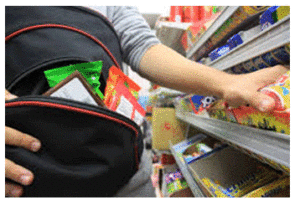
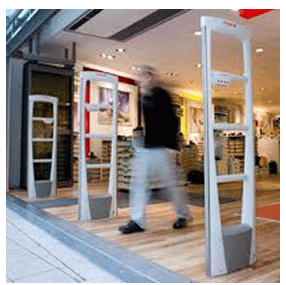
 Are they asleep at the switch? Do they care? Have you trained them how you want the shoplifting deterrence program in your store to work and what their roll in it is? This is not something you can put off. It’s like saving money in an account. You got to start. If you are one of Loss Prevention Systems Customers already, then you know this. That is why we conduct live, personalized shoplifting prevention and loss prevention training for our customers.
Are they asleep at the switch? Do they care? Have you trained them how you want the shoplifting deterrence program in your store to work and what their roll in it is? This is not something you can put off. It’s like saving money in an account. You got to start. If you are one of Loss Prevention Systems Customers already, then you know this. That is why we conduct live, personalized shoplifting prevention and loss prevention training for our customers. 